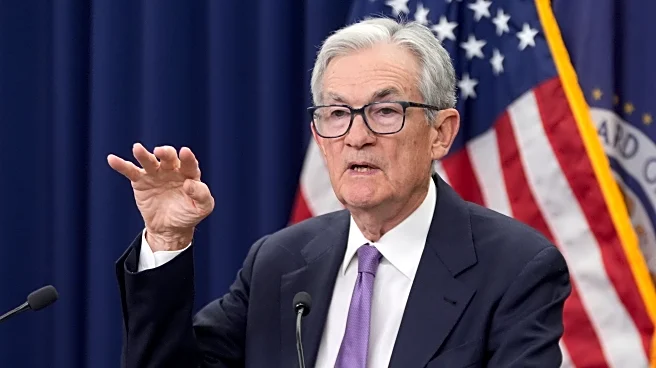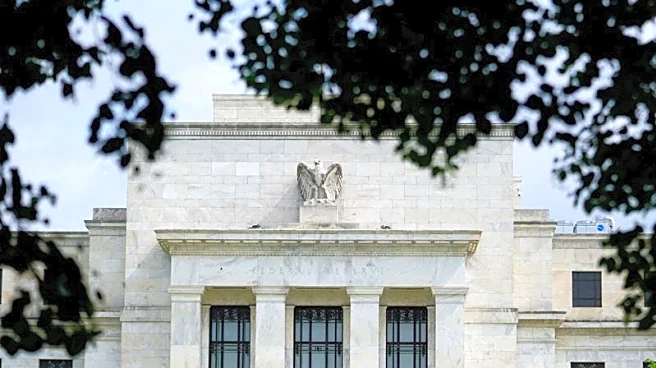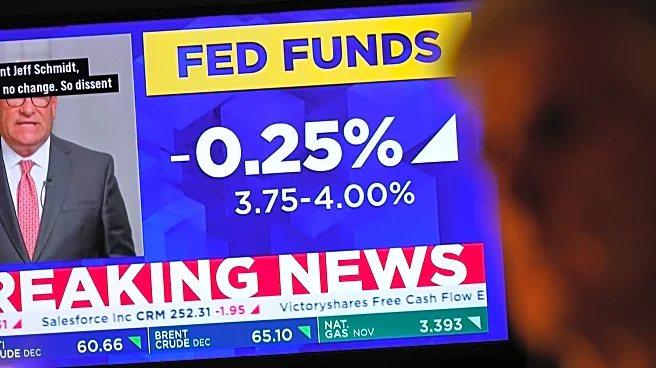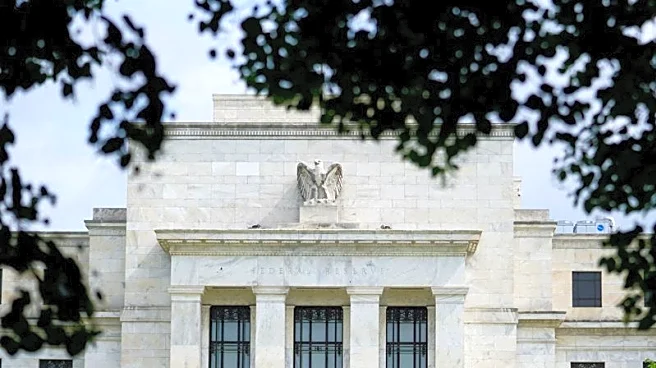What's Happening?
The U.S. Federal Reserve has reduced its key interest rate by a quarter percentage point to a range of 3.75% to 4.00%, as announced on October 29, 2025. This decision, made by a 10-2 vote within the Federal Open Market Committee (FOMC), comes amid concerns
over a weakening job market and limited economic data due to the ongoing federal government shutdown. The rate cut aims to prevent further decline in employment and stimulate economic activity. However, the decision faced dissent from two policymakers: Governor Stephen Miran, who advocated for a deeper reduction, and Kansas City Fed President Jeffrey Schmid, who opposed any cut due to inflation concerns. The Fed also plans to restart limited purchases of Treasury securities to address liquidity issues in money markets.
Why It's Important?
The Federal Reserve's decision to cut interest rates is significant as it reflects the central bank's efforts to support the U.S. economy during a period of uncertainty caused by the government shutdown. Lower interest rates are expected to reduce borrowing costs, potentially boosting consumer spending and investment. However, the dissent among policymakers highlights the challenges in balancing inflation control with economic stimulation. The rate cut could benefit sectors like housing, where lower mortgage rates might spur activity, but tight credit conditions in other areas may persist. The move also signals the Fed's cautious approach in navigating economic policy amid limited data availability.
What's Next?
Looking ahead, Federal Reserve Chair Jerome Powell indicated that further rate cuts are not guaranteed, emphasizing that policy decisions are not predetermined. The Fed's next meeting in December will be crucial, as policymakers will reassess economic conditions and decide on future actions. Stakeholders, including investors and businesses, will closely monitor the Fed's decisions, as they could impact market dynamics and economic growth. The ongoing government shutdown may continue to limit data availability, complicating the Fed's decision-making process.
Beyond the Headlines
The Federal Reserve's actions underscore the broader implications of the government shutdown on economic policy and data-driven decision-making. The shutdown has restricted access to vital economic indicators, forcing the Fed to rely on outdated data and estimates. This situation raises concerns about the accuracy of economic assessments and the potential for misaligned policy responses. Additionally, the dissent within the FOMC highlights the complexity of monetary policy in addressing diverse economic challenges, such as inflation and employment, in a rapidly changing environment.















